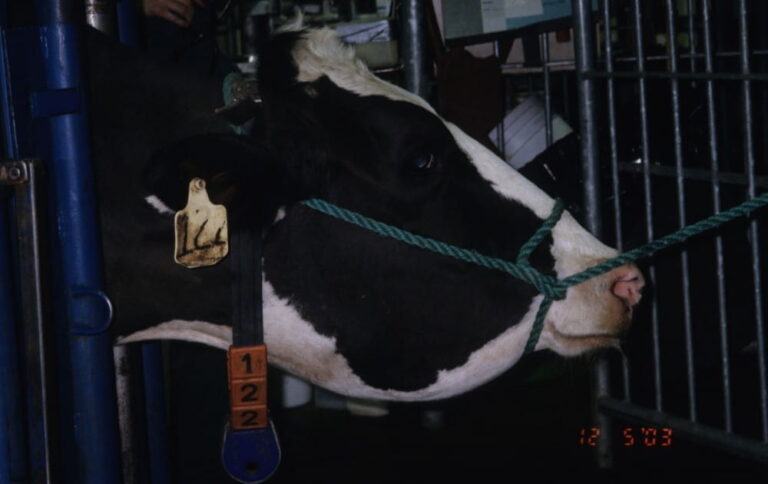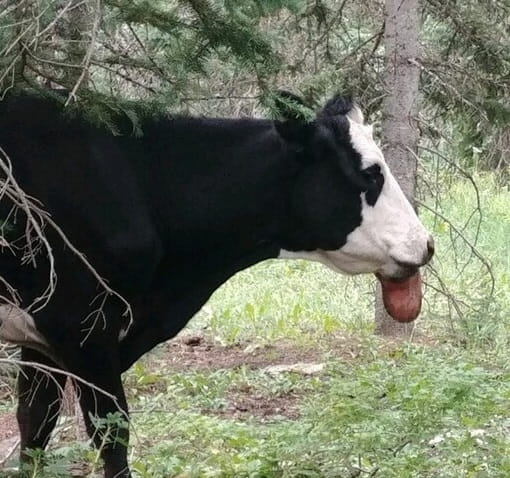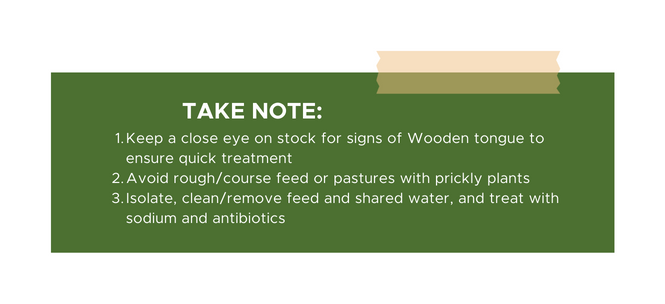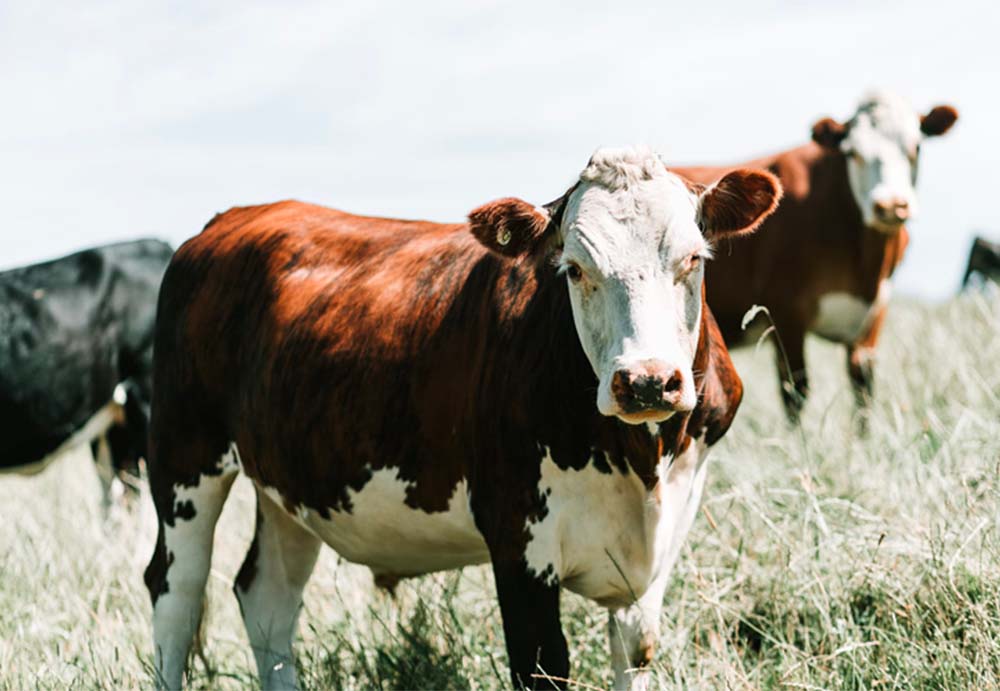What is Wooden Tongue?
Wooden Tongue or Woody Tongue also referred to as “action” is an infectious bacterial disease most commonly seen in cattle. The bacteria which is part of the bacterial flora of cattle invades the skin through wounds in the mouth leading to infection. The infection leads to cattle having a very hard, painful, swollen tongue which may protrude out of the mouth. This prevents the animal from being able to eat or drink, causing a rapid loss of condition.
What are the signs?
- Drooling
- Tongue protruding from between the lips
- Inflamed tongue which becomes hard, swollen, and painful
- Soft swelling around the lower jawbones (bottle jaw)
- Nodules and ulcers on the tongue (often of the sides of the tongue)
- Inability to eat of drink
- Rapid loss of condition


Transmission and Spread
The bacteria (Actinobacillus lignieresi) leading to wooden tongue is part of the normal mucosal flora of the upper GI tract and causes the disease when wounds in the mouth allow the bacteria to infect the animals soft tissue. It causes localized infections and can spread via the lymphatics to other tissues.
Wooden tongue is usually sporadic, however can affect a number of individuals on farm. This usually coincides with the feeding of course or prickly feed.
Wooden tongue is not considered highly contagious, however, the bacteria can be spread from one animal to the next through infected saliva that contaminates feed which other animals may consume. Reports indicate that the bacteria can survive between 4 to 5 days in feed.
Diagnosis
For cattle, diagnosis can be done from a combination of close inspection of the animal for the listed symptoms combined with laboratory analysis from a smear sample of the animal which can confirm the diagnosis.
Treatment
Cattle with wooden tongue should be isolated and treated immediately. Early treatment is usually successful, but advanced cases may fail to respond.
The most effective treatment is iodine therapy either given alone or in combination with antibiotics. Combination treatment is usually more effective. The initial dose of Sodide® (sodium iodide) is best given intravenously by your veterinarian. Follow-up subcutaneous injections at weekly intervals for several weeks are likely to be necessary in deep-seated cases. However, subcutaneous treatment alone may be effective.
In advanced cases, there may be irreversible thickening and scaring of the tissue on the tongue and the animal may not regain normal tongue function.
Prevention
Primary prevention of Wooden tongue is the avoidance of feeding livestock course and prickly feed. Grazing hard stubble such as canola or hard penetrating plants such as foxtails or thistles also increases the likelihood of bacterial infection due to lesions.
This issue is more likely to occur during drought or dry periods where access to high quality supplementary feed may be more difficult.
Isolation of the infected animal as soon as it displays signs of the disease will prevent spread.
Impacts
Woody tongue causes animal welfare issues due to the painful nodules and rapid loss of condition of the animal. if left untreated leading to advanced cases, this can be considered an animal welfare Offence. Close monitoring of animals is essential for early detection.
There is an associated economic loss due to culling of severely infected animals, and cost of treatment of those infected. The animal may require supplementary feeding to bring the back the condition score of the animal.
Time is also lost due to extra work and time needed to isolate and treat infected cattle and the disinfecting of feed and water troughs.

Further Resources
DPI NSW – Lumpy Jaw and Wooden tongue in Cattle
Farm Health Online – Wooden Tongue in Cattle
MSD Manual Veterinary Manual – Actinobacillosis
Veterinary Handbook – Actinobacillosis
Click here to download a PDF version.
For further information, please contact the VFF Livestock Group on 1300 882 833 or by email [email protected]
Disclaimer: All care is taken in the preparation of the information and published materials produced by the Victorian Farmers Federation (VFF) including but not limited to errors, defects or omissions in the information provided. VFF does not make any representations or give any warranties about the accuracy, reliability, completeness, or suitability for any particular purpose in the preparation of the information and published materials. This publication is intended for general information purposes only and does not constitute financial, legal, investment, production, or marketing advice. To the maximum extent permitted by law, the VFF and all persons acting on behalf of the VFF in preparing documents, are excluded from all and any liability for any loss or damage of any kind arising in relation to this publication including any reliance on the information contained herein.
